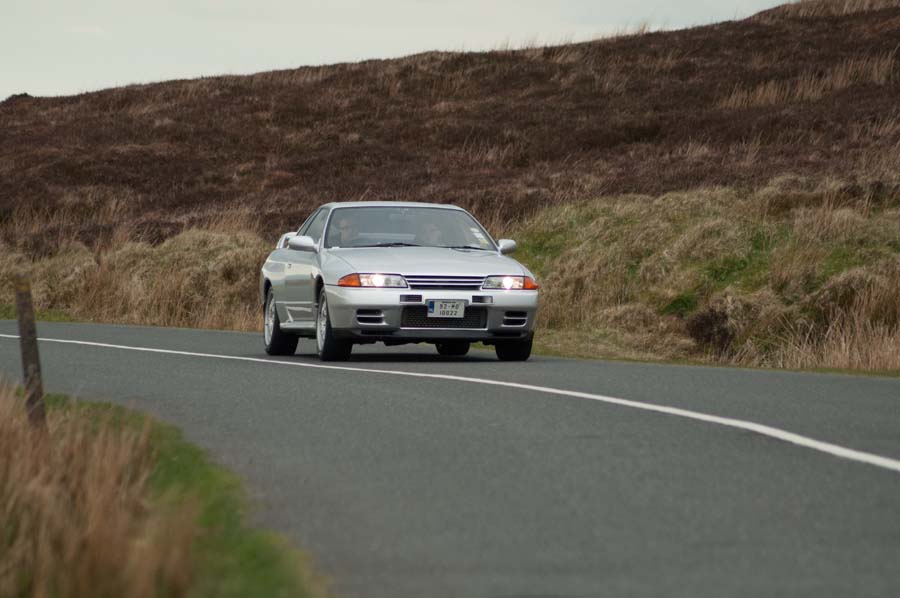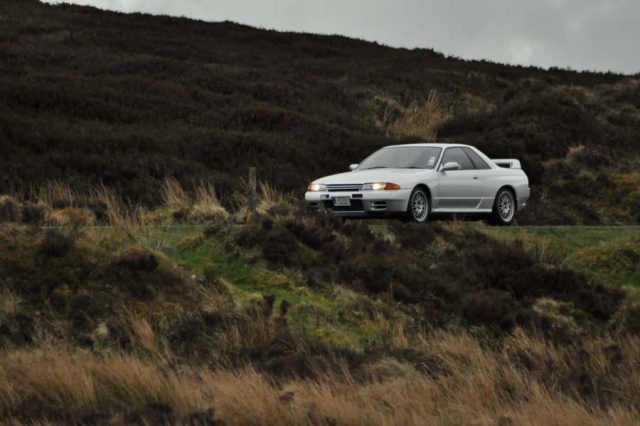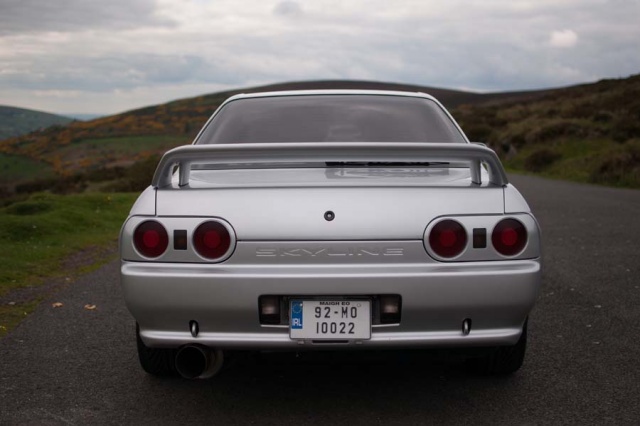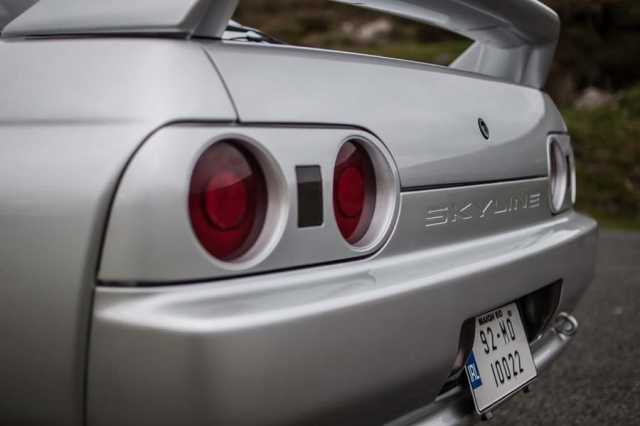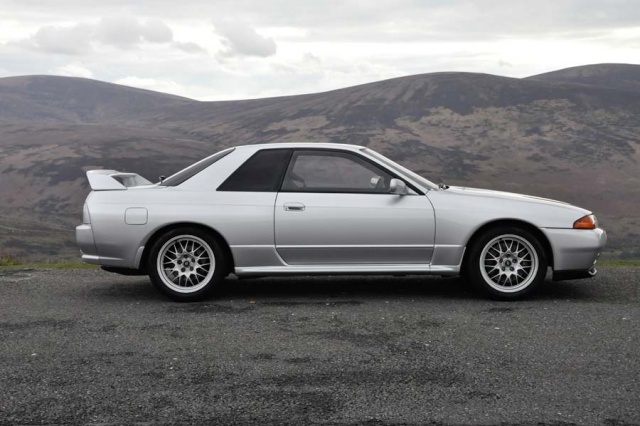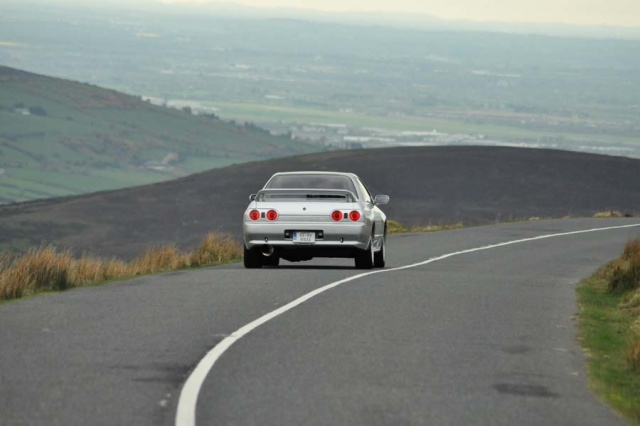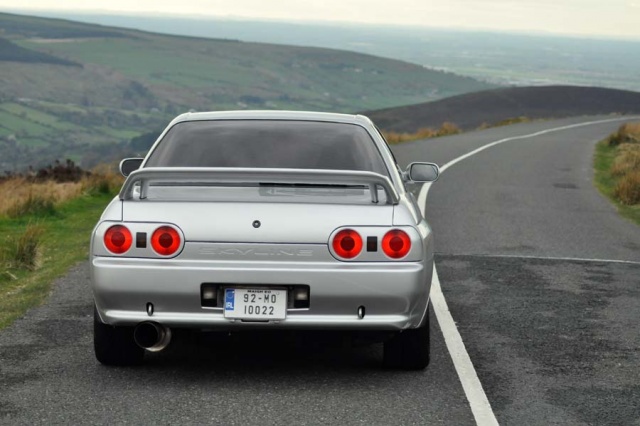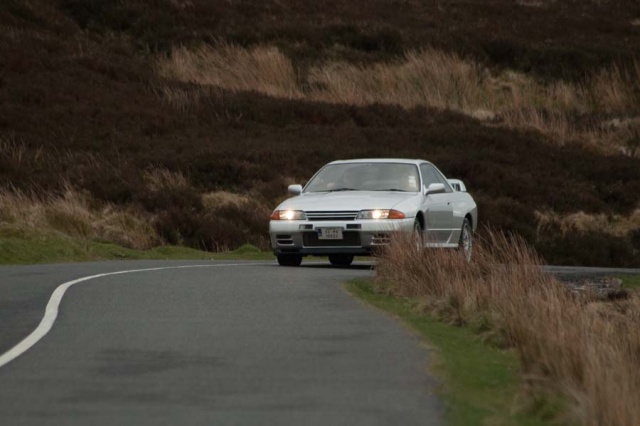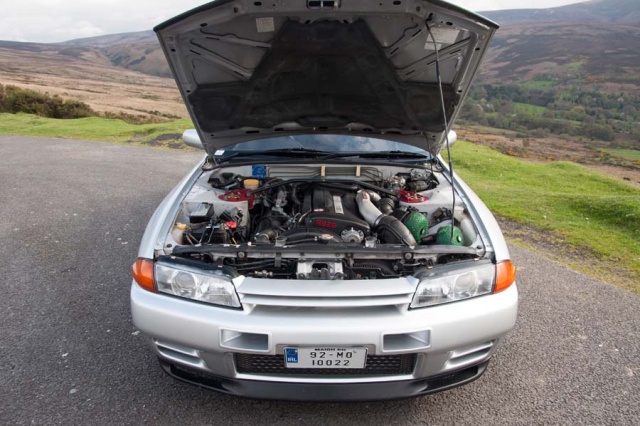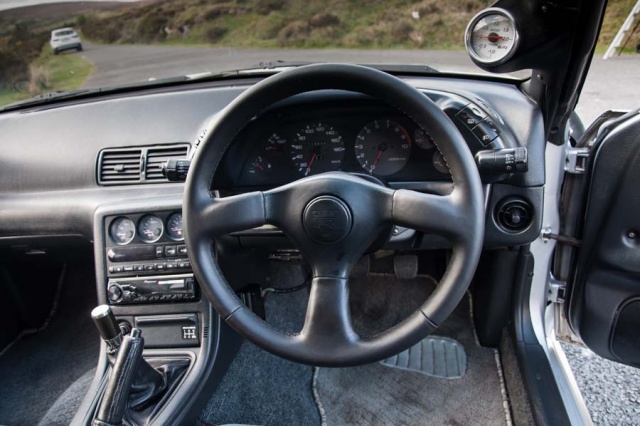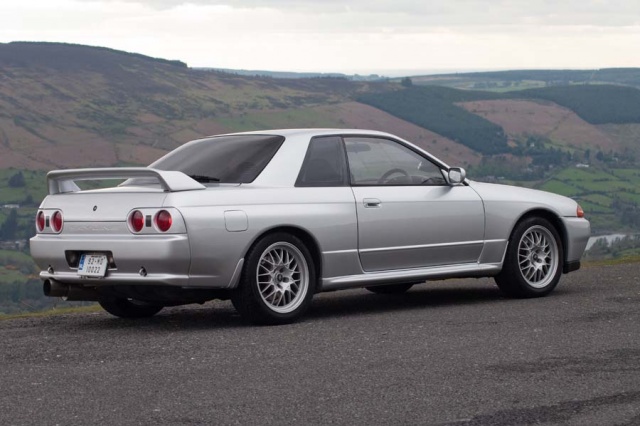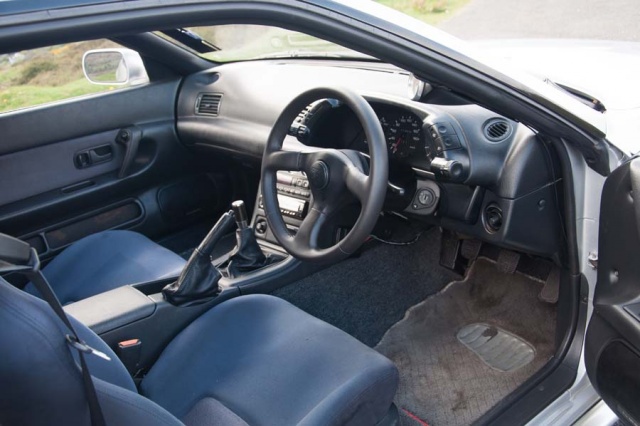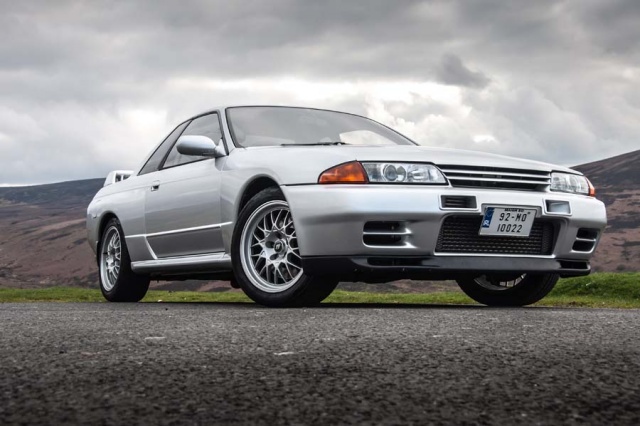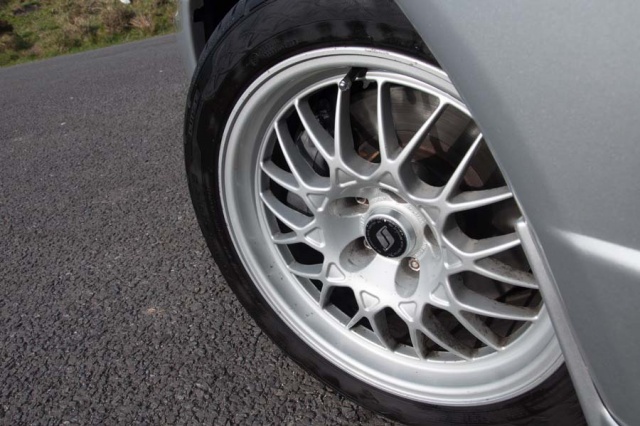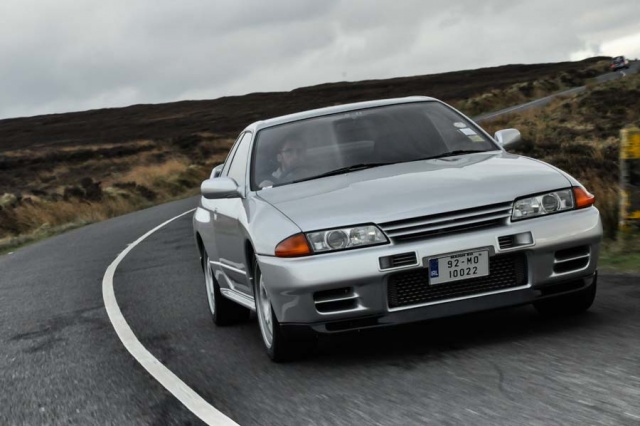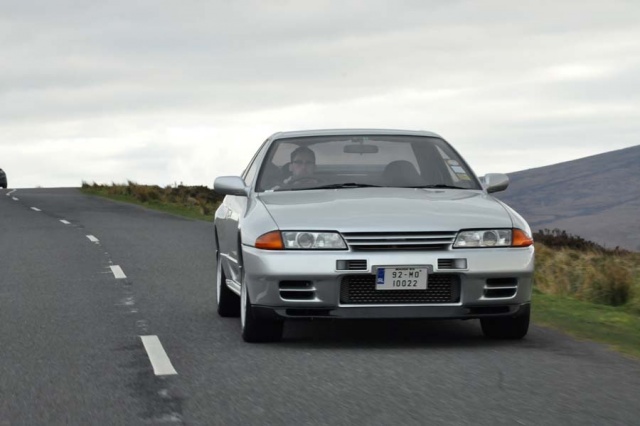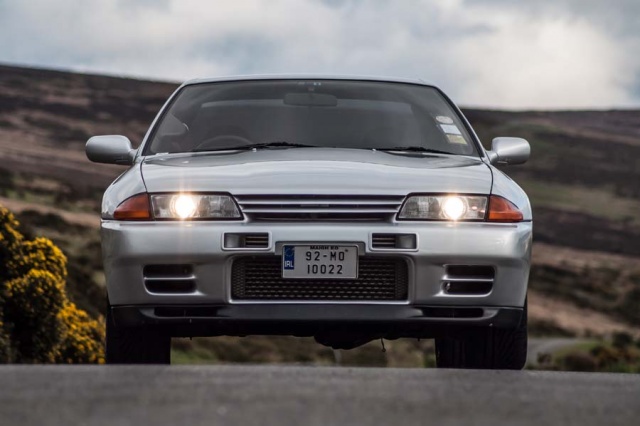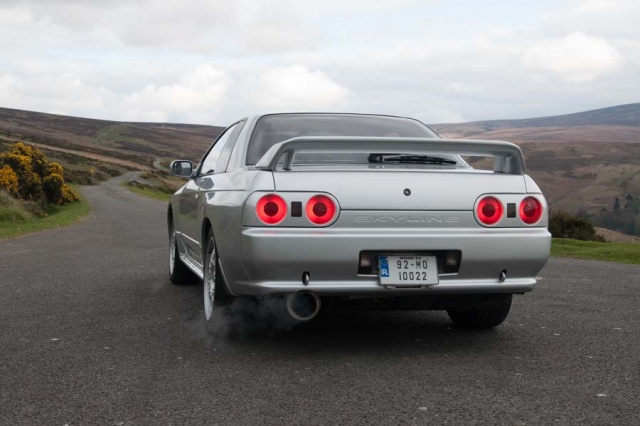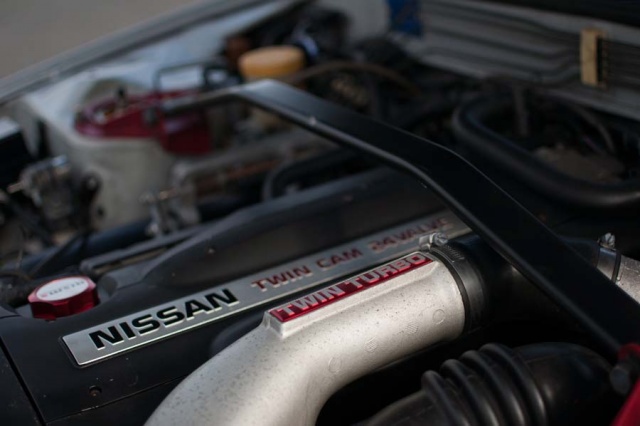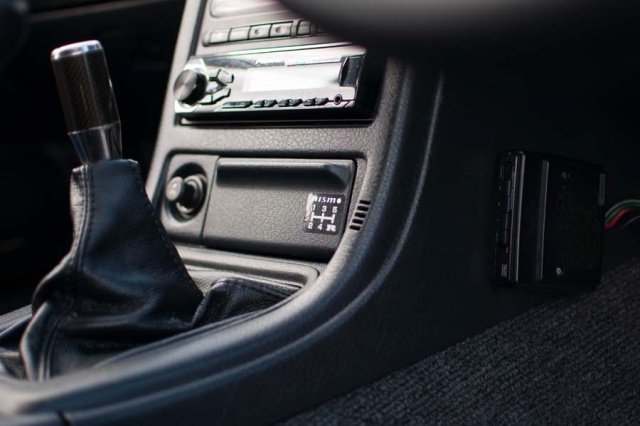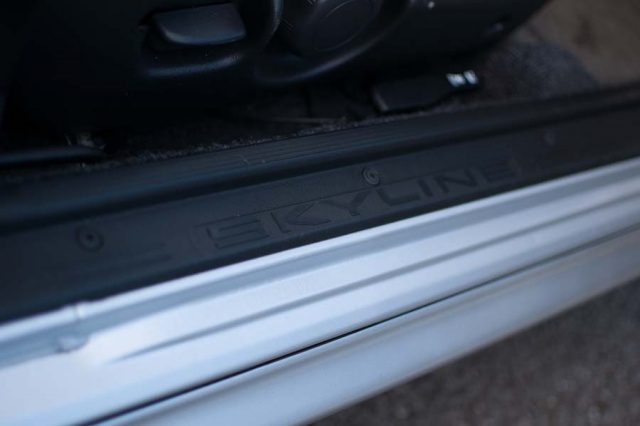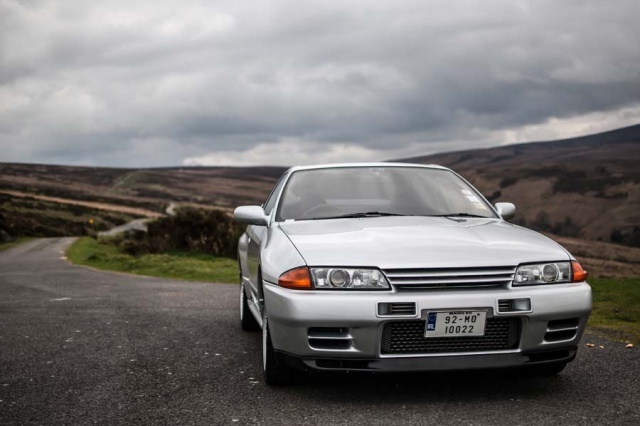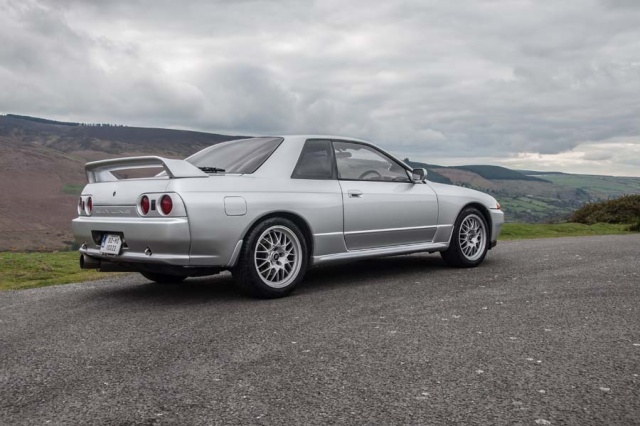We investigate the cult of the Nissan GT-R, and take an original 'Godzilla' for a spin.
Speed
Daikoku Futo parking area, just off the Bayshore Route that connects Tokyo to Yokohama, on a dry and chilly February night in the mid-nineties. Four cars sit neatly parked, their owners huddled in a tight group. The smell of Marlboro smoke mixes with intoxicating exhaust fumes, as two Supras, an RX-7 and a 911 idle impatiently. One guy brandishes a local newspaper, his thumb hovering over an ad that proclaims, “Watches for sale. Premium brands. Meet at Daikoku PA, 12am February 10th.”
A guttural six-cylinder howl overlaid with comical levels of turbo whistle and chatter announces the arrival of the fifth member of this tight-knit sect, as an R32 Skyline GT-R glides smoothly into view and wends its way down the sliproad towards the meeting point. The slight, bespectacled driver hops out and immediately sparks up a cigarette. These men are all successful businessmen by day. And nobody is here to buy a watch. One owns several car dealerships; another is the founder of a respected tuning house. The top of each car's windscreen bears the legend ‘Mid Night', while small rectangular stickers carry a “Caution: Wake Turbulence” warning. Up close, it's possible to see that the aftermarket mirrors and front bumpers of the beasts are pock-marked from stone chips with huge, grille-filling intercoolers hinting at the massive power underneath their bonnets. These engines are far removed from their supposed 276hp factory outputs, that figure being the one notionally adhered to by the major Japanese manufacturers as part of a gentlemen's agreement to curb spiralling horsepower figures.
That newspaper advertisement is a coded announcement to bring members of the group together, so that they can go and break the 300km/h barrier on the lightly-trafficked Wangan highway. Drifting holds no appeal for these outwardly sane individuals, a couple of whom are well into middle-age territory. All they want to do is go as fast as their machinery will allow.
Cigarettes are quenched with the soles of expensive loafers and everyone straps themselves in to their respective Recaros. These folks have been at this game for quite a while now, and each member feels the familiar sense of sweaty-palmed excitement and trepidation that precludes a night of flat-out running on public roads.
One of the Supras leads the pack onto the road. An occasional truck or taxi is all that the drivers will encounter tonight, and as police cars are limited to 180km/h, the chances of being caught are slim. Rolling to a halt a few hundred metres up the road, the big Toyota subsequently disappears in a fug of its own tyre smoke, as the driver performs a huge burnout to warm the rubber to temperature. Time to go.
Running up to huge speeds, the RX-7 is visibly unstable, its driver working hard to keep the rotary-engined missile under control. The 911 squats off the line and begins to eat up the tarmac in front of it, each gearchange announced by the chuff of dumped turbo boost. It's comfortably broken the magic 300km/h figure on numerous occasions recently, but, tonight, one car is staying with it. To the Porsche driver's disbelief, the white GT-R relentlessly reels it in and draws past through one of the many long tunnels on the route, its rear lit up by the four afterburner-style taillights like Concorde pushing through the sound barrier. Throttle pinned to the bulkhead, the 911's hand-built engine can give no more, and still the R32 keeps pulling away. A wall of wind and engine noise pulses through the tunnel. Far in the distance, a solitary Hino truck gives reason for the pilots to ease off, the Skyline spewing flames out of its exhaust on the overrun like a dragon with a particularly vicious head cold. There's a new Hashiriya king. Godzilla.
Of course, Nissan didn't build the GT-R just so a few deranged Japanese guys could embarrass the local 911 brigade. Like so many other performance cars of the era, the GT-R was born to compete in Group A motorsport. Compete is the wrong word, though. The GT-R was designed to crush the opposition in the most ruthless way imaginable, and the racing cars were fearsome, flame-spitting, howling beasts that chewed up and spat out the erstwhile Sierra Cosworths and M3s like a monster regurgitating the skeletons of its victims.
A beast is born
The Skyline name dates back to Prince Motor Company times, and the GT-R moniker first appeared on the Hakosuka Skyline in 1969. Hugely successful in domestic Japanese racing, it was replaced by the short-lived Kenmeri GT-R, the existence of which was quashed by the 1973 oil crisis. Then nothing much happened for a while.
The mad, cartoonish silhouette racers of the early part of the following decade were confined to their homeland, and anyone who's driven a virtual Group 5 Tomica Skyline on Gran Turismo will attest to the ‘interesting' handling of that particular car. Like their competitors in international race series, Group A versions of the R31 Skyline were rear-wheel drive only, and despite a few promising results, touring car racing still belonged to the Cossies and the M3s. Nissan itself was in no small amount of trouble, and the new-generation Skyline was destined to have a racing program from the very start in an attempt to improve the brand's image. Enter the R32 GT-R.
Starting with the coupe shell of ‘cooking' Skylines, Nissan's engineers aggressively widened the track, necessitating swollen wheelarches. The front bumper featured multiple openings for cooling and air intake purposes, while a neat rear spoiler sat atop the bootlid. In common with pretty much every performance Japanese car, the list of special variants could fill a book on its own, and different versions like the Nismo, N1 and V-Spec received extra vents, lip spoilers and wheel sizes, mostly in the name of homologating parts for use on the circuit.
The now-legendary RB26DETT was chosen as the powerplant for the new challenger. This 2.6-litre, twin-turbocharged unit nominally produced 276hp and 361Nm from the factory, but even standard motors have been known to push out well over 300hp on the dyno. Racing versions saw upwards of 600hp, with some choice strengthening of internal components to ensure longevity.
Bristling with technology like the ATESSA E-TS all-wheel-drive system and HICAS four-wheel steering, the chassis was amazingly advanced for its time, and owed more than a little to the spectacularly complicated Porsche 959. Sensors measuring wheel speed, steering angle and gravitational forces fed data back to the system's brain, which then commanded the E-TS pump to apportion drive to the front wheels as necessary. The car's handling characteristics mimicked a well set-up rear-wheel-drive car, with the added safety net and traction of all-wheel drive when the systems deemed it necessary. Porsche's engineers were reportedly more than a little upset when the boxy Japanese upstart began to lap the Nürburgring quicker than their own products...
Group A killer
Believe it or not, performance car fans should feel a little bit of hatred towards the R32 GT-R. Its crushing dominance of Group A touring car racing actually led to the category's demise, with specialised, non-homologated classes such as Supertouring taking over. It won every race it entered in the Japanese Touring Car Championship (JTCC), along with every JTCC title from its introduction until its retirement. The Aussies got so fed up of it beating the homegrown Falcons and Commodores that they tried to disable it with weight penalties and boost limits, to no avail. When a GT-R won Bathurst in 1992 after finishing the race on three wheels, the Australians banned it for good. The death of Group A meant the death of homologation specials, and current market prices for any car with motorsport heritage reflect the esteem with which they are held in the eyes of enthusiasts. Despite the R32 only being officially sold in Japan, Australia, New Zealand and Hong Kong, it garnered a worldwide following that later generations would capitalise on, and the grey import trade meant that examples can be found in all corners of the globe.
Watching period footage goes some way towards understanding the Nissan's success. Whilst the Sierras light up their rear tyres in laptime-killing wheelspin, the Skylines just grip and grip and grip, maximising the RB26's huge firepower to catapult them down the straights. Running major amounts of negative camber on the 11-inch wide front wheels and belching fire from their side-exit exhausts, the cars devour the tarmac, decorated in iconic liveries. Magic.
Tuners also seized on the GT-R's capabilities, and engines wound up to over 1,200hp propelled cars down drag strips at hitherto unseen rates. Time attack cars demolished lap records, street racers bullied 911s into submission, magazines and media idolised the beasts, and Skylines appeared on the bedroom walls of teenage boys the world over. Nissan had really got this one right.
Virtual reality
Thanks to the wonders of Gran Turismo, most of us have driven a Skyline at some stage during our formative years, albeit in pixelated form. Today, I'm lucky enough to get behind the wheel of a beautifully restored example. A genuine GT-R. It's the first time that I've had the chance to scrutinise one up close, and that old adage about never meeting your heroes is being soundly disproven.
It's a big car, the R32. The front is all mouthy intake and fat wheelarch, while the B- and C-pillars have a forward-canted shape that's as distinctive and evocative as a BMW's Hofmeister kink. Round the back, the four taillights look deeply cool when viewed at night, and the Skyline motif carved into the upper part of the rear bumper is very retro-futuristic. Owner Vinny has fitted the 17-inch BBS wheels from a V-Spec model to this particular car, and a recent glass-out respray means that the silver bodywork is absolutely perfect.
Inside, the first items to draw your eye are the dash-mounted toggles for the lights and wipers, as well as the comedy 180km/h speedometer, a legacy of the car's Japanese origins. A fat-rimmed steering wheel falls nicely to hand, and amazingly this car still has its original seats, a very rare treat. You sit low, feet comfortable on the pedals and left hand on the stubby gear lever. The engine note is smooth at idle, maybe not as cultured as a German-born six-cylinder's, but purposeful all the same. Your left calf muscle is untroubled by the surprisingly light clutch and a little pressure on the throttle pedal is all it takes for Godzilla to start moving along.
“What does it weigh?”, I ask Vinny. His answer of ‘roughly 1,500kg' feels like an overestimation, as for a big car it's supremely light on its toes. The steering is direct and quick-witted, with lovely amounts of feel coursing into your palms at low speeds. The car hunts a little, as if it's straining at a leash, goading you to press the throttle some more. Into third gear, the throw short and slick, the engagement positive. “Go on, give it to it!” laughs Vinny. It would be rude not to oblige, although my right foot is a little hesitant as price tags of clean R32 GT-Rs flash before my eyes...
OK. Here we go. Steering straight, throttle pressed all the way to its stop. Boost builds, slowly at first, the engine's note rising in unison. It's not a massive step change when the power comes, but when it does everything goes a bit blurry. The RB26 just revs and revs and revs, crazily so for a big turbocharged engine. Back off again. The dumping of boost sounds like a flock of pigeons under the bonnet. That was fun.
I do this a few times, just enjoying the wonderfully gutsy feeling of this incredible motor. There isn't a squeak or rattle to be heard anywhere in the plasticky cabin and the ride is stiff and composed without feeling too severe in any way. Back around again.
Flooring it in first gear, there's no wheel spin, just grip and go thanks to the wizardry of ATESSA E-TS. Up through the gearbox, quicker this time into a sequence of sweetly cambered lefts and rights. The car does reveal its weight under heavy braking, and the four-pot front and two-pot rear calipers feel barely up to the job. Adjust braking distances accordingly. Turn-in is impeccable, with a slight hint of stabilising understeer. Picking up the throttle immediately rectifies this, the electronics dictating the best course of action for you in an instant, which necessitates winding off some lock as the car's attitude shifts to very mild oversteer through the apex. Grip and go to the next corner. I could do this all day.
It feels incredibly sure-footed, and on this short drive I get nowhere near the car's limits. The GT-R is a weapon in the right hands, but despite all the technology it never feels inert or cold. You are fully immersed and involved in every movement. As an engineering exercise, it's an amazing achievement, and as a driver's car it's one of the very best. It must have seemed like a spaceship three decades ago.

